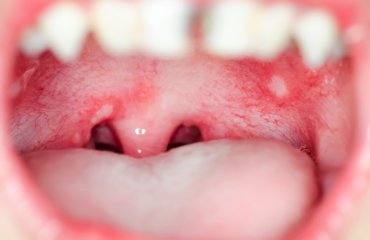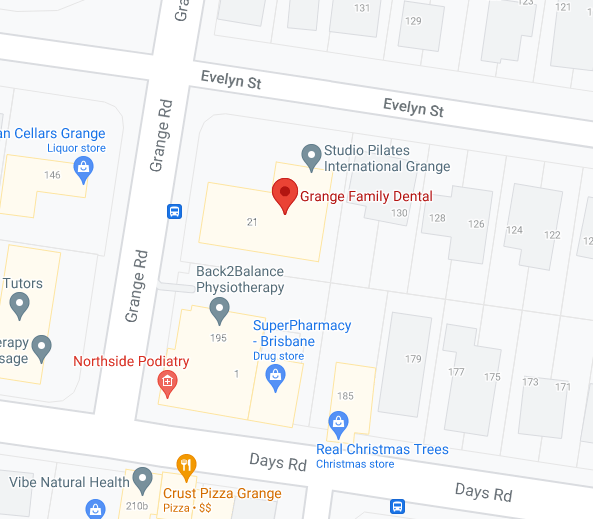
Don’t Skip the Floss: Your Smile and Health Depend on It!
Flossing is vital for keeping our mouths healthy. It sweeps away plaque and food bits from spots your toothbrush can’t get to. Here’s a fun fact: did you know that the average person should use around 110 metres of dental floss in their lifetime? But, guess what? Sales numbers show we’re not hitting that mark. It seems a lot of us are skimping on flossing. And it’s not just a small mistake; it’s impacting our health. So, when you’re done brushing next time, don’t forget to floss. Your smile will be all the better for it!
In fact, the National Oral Health Plan estimates that a whopping 63,000 Australians are hospitalised each year for preventable dental conditions! A scary stat, sure, but, the good news is, the power of prevention is in your hands – and a crucial part of it comes in the form of a tiny box of thread.
Flossing: Small Habit, Big Impact on Oral Health!
While the toothbrush is indispensable for daily dental care, it has its limitations. It can’t reach all tooth surfaces, leaving at least two out of five untouched. Areas like between overlapping teeth and the back of molars are inaccessible. This is where flossing becomes essential for comprehensive oral hygiene.
Flossing is a quick daily habit with a big impact on oral health. Skipping it means missing cleaning up to 40% of your tooth surfaces. This puts you at risk of gum disease, plaque, tartar build-up, and eventually tooth decay. So, let’s explore the importance of flossing, effective techniques, and how to make it a lasting habit.
When you don’t floss your teeth, you miss cleaning at least two of the five surfaces of each tooth. This includes the sides, areas where teeth overlap due to misalignment, and the back of molars. These are spots that a toothbrush alone can’t reach, highlighting the importance of interdental cleaning, such as flossing.
Gum Health Matters: The Hidden Dangers of Skipping Flossing
Furthermore, it’s essential to grasp that flossing plays a substantial role in gum health. It extends beyond dislodging trapped food to meticulously cleaning the concealed areas of each tooth, including the region beneath the gumline. Here, debris, bacteria, and plaque gather, fostering tartar buildup and decay. Despite seeming shielded, these areas remain exposed to everything entering the mouth, underscoring the necessity of consistent flossing.
If you’ve ever noticed blood in the sink after brushing your teeth, it can be concerning. However, don’t let it deter you from flossing. In fact, seeing blood when you brush should prompt you to prioritize flossing. Gum bleeding may indicate gingivitis, an early stage of gum disease. Untreated, it can progress to periodontitis, a more severe condition leading to potential abscesses or tooth loss. Adopting a gentle yet thorough flossing technique can help stop bleeding within a week. If bleeding persists despite improved dental hygiene, consult your dentist for further evaluation.
When and How to Floss
First, find your floss: Waxed, unwaxed, minty, plain, charcoal, tape – there are SO many types of floss out there, it can be tough to know which to choose for your family. In general, it’s more important that you floss, than what you use. While some people find waxed floss glides over the tooth surface more easily, conversely, it can be thicker, making it trickier to pass between smaller spaces and more crowded teeth. Try out a few types to find the one you’ll be most likely to use every day of your life and keep it right beside your brush – no cheating and stuffing it in the deep dark corners of the bathroom cabinet!
How to Floss Your Teeth?
Set aside some time – Ideally, you should floss every time you brush, and absolutely at least once a day. A good rule of thumb is to floss before you brush, and if you only do it once a day, do it before bed, during your nighttime routine.
If that’s not possible for any reason – life is never so straightforward, right? – That’s ok! If there were 3 little words that apply to flossing, they would be: JUST DO IT. Quality over quantity applies to flossing too. Thoroughly flossing at bedtime beats rushing three half-hearted sessions daily.
Next, perfect your technique: To floss, grab about 15 inches of floss, and twirl an end around each index finger. Gently slide the floss between the teeth, and pull to one side in order to wrap it around each tooth in a “C-shape.”
Polish using an up and down motion, making sure you go beyond the gum line, up to where the tooth is actually anchored by the root. This technique ensures you scrape away build-up on the tooth, beneath the gum, and are not merely removing larger food particles. Repeat this process on each side of every tooth, and don’t forget to ‘lasso’ the very back teeth, too!
Is Flossing Teeth Really Necessary? Can’t I Just Use a Mouthwash?
Sorry to disappoint you, floss-phobes, but, in a word: no. While it’s true that some mouthwashes can soften plaque and stop it sticking to tooth enamel. Yes, mouthwash is a great finishing touch to your oral routine but not a replacement for flossing. Though flossing may not offer instant freshness like mouthwash, it’s effective. Flossing’s scraping action improves long-term mouth health.
Why Starting Flossing Is Always Right on Time: Never Too Late, Never Too Early
If you’ve avoided flossing all your life, beginning can seem challenging. However, the truth is, as long as you still have teeth, it’s never too late to start flossing! Whenever you start, you’ll be improving your oral health from your first floss.
Don’t forget, too, the family that flosses together, grins together, so make sure you start teaching kids about the benefits of flossing – and the right way to do it – nice and early. As a general rule, when children are old enough to have teeth that sit side by side (2 to 6 years) they need to floss.
Don’t assume they’ll lose those teeth anyway. Remember, flossing is crucial for gum health. You only have one set of gums!
Making Flossing a Lifelong Habit
We get it – you’re busy, and if you’re going to add another thing to your to-do list, you’d rather it be a little more fun than flossing your teeth. The good news is, once you develop an effective method, flossing should only take you about two minutes to complete. Add to that the three or so minutes you’ll spend brushing your pearly whites and it’s really just the time it takes to bop along to one track off your favourite album to get a smile that will last the miles. While adopting a new habit can require conscious effort at first, it won’t be long before its second nature.
Add dental floss to your grocery list as a staple so you never run out (let it replace something sugary for twice the effect!), remind yourself it’s only two little minutes that deliver a plethora of benefits, and before you know it, you’ll be getting a gold star from your dentist instead of dreading that inevitable question: “Do you floss?”
We know after reading this you’re keen to go get flossing (right?) But just a quick reminder, to ensure dental and oral health for life, it’s important to see your dentist every 6 months. Regular check-ups not only give your dentist a chance to clean your teeth and remove calculus like only a pro can, it’s also a chance for them to check for any signs of bruxism (teeth grinding), gum disease and even oral cancer, and intervene with treatment nice and early, so don’t skip your check-up!
You can book an appointment with the friendly Grange Family Dental team by calling (07) 3356 0166.









